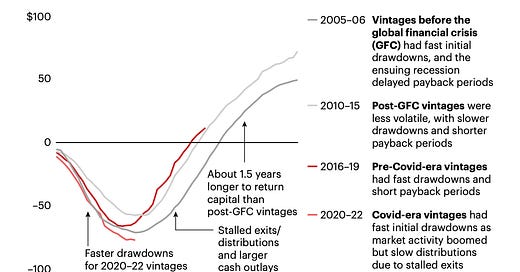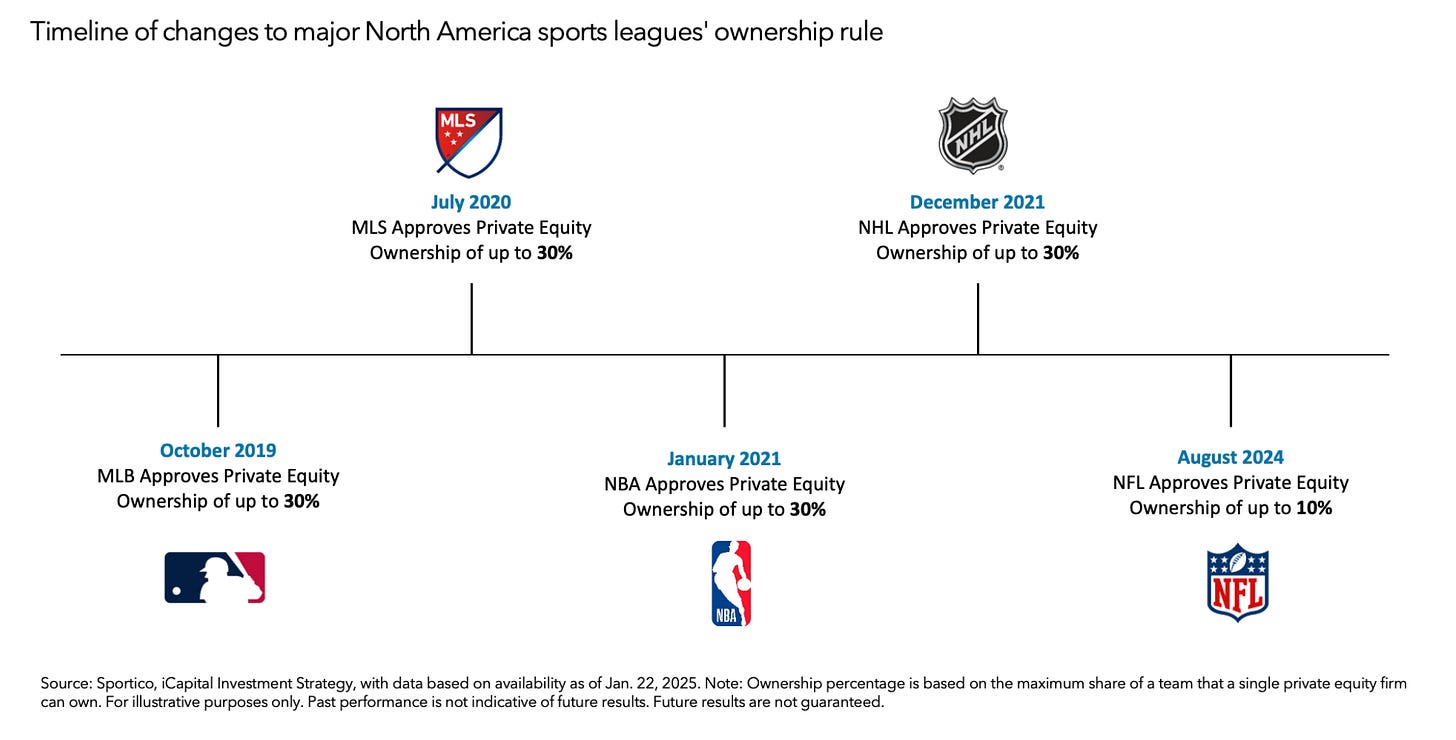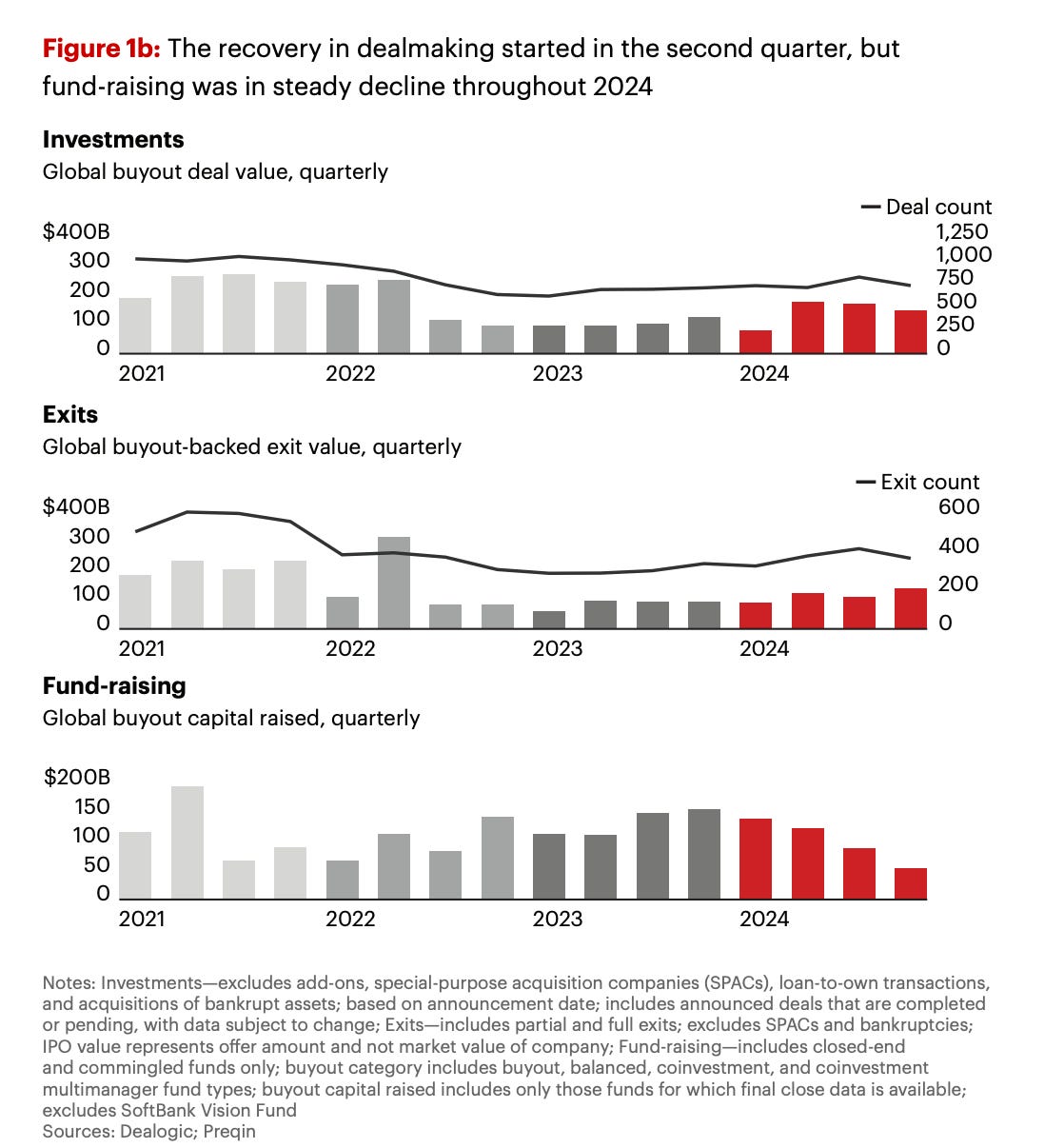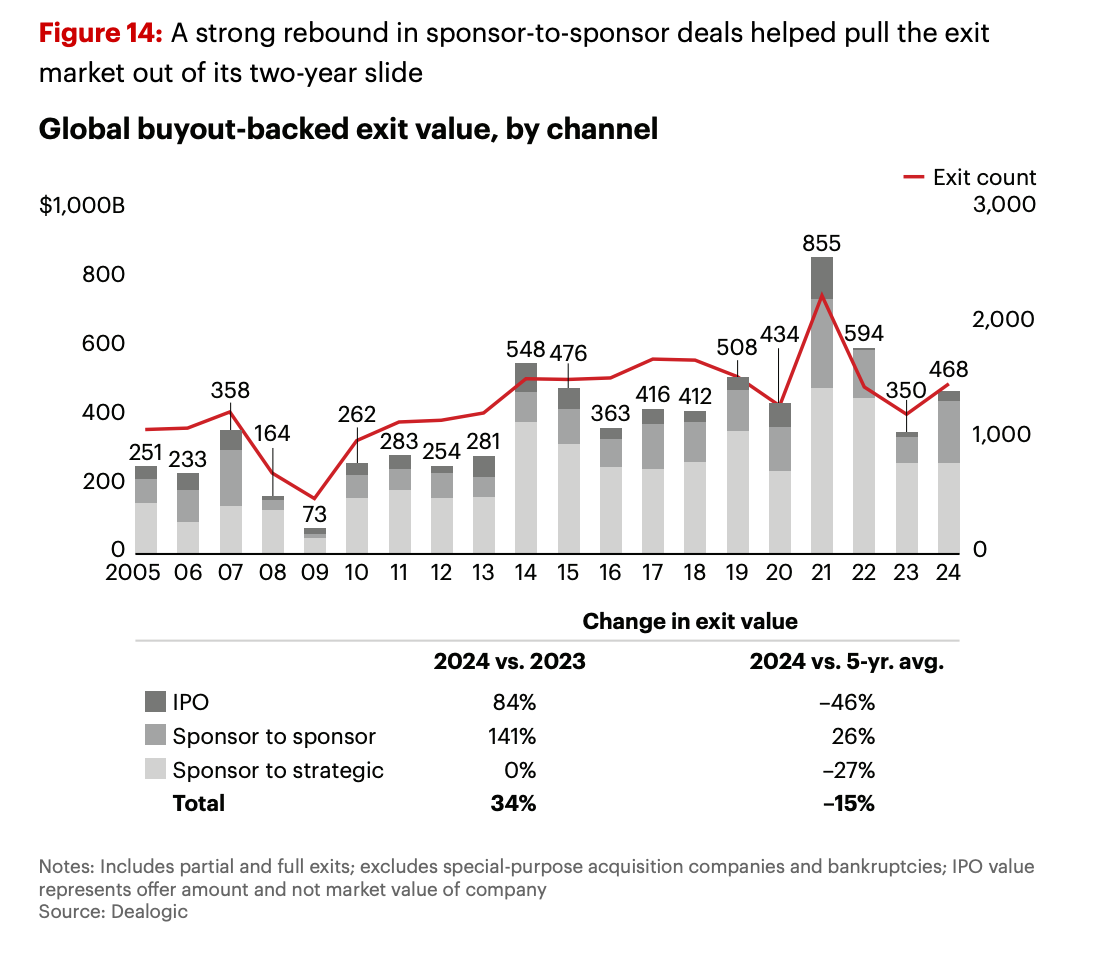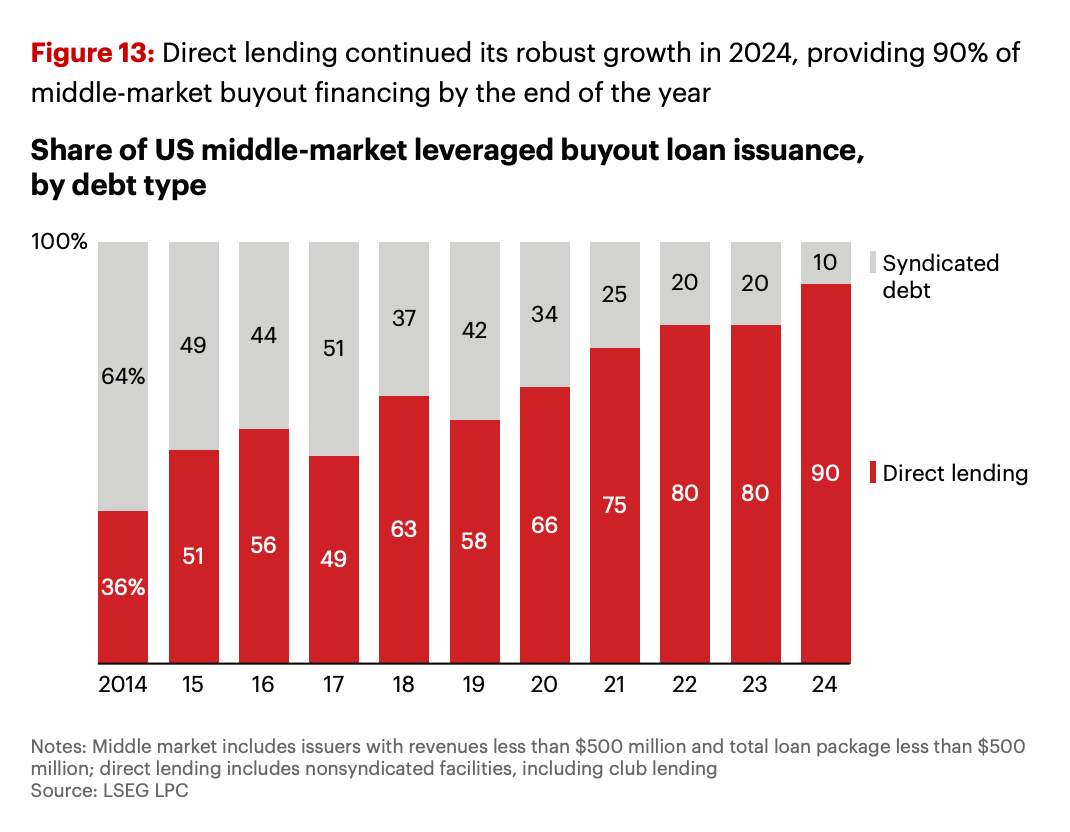Sunday Digest: Focus on Private Equity
The Celtics' Blockbuster Deal and Bain's Private Equity Report
Happy Sunday! Ever wonder why your private equity investments are taking so long to return capital these days?
Take a look at this chart showing net cash flows by vintage year:
✓ Post-GFC vintages have seen slower drawdowns and shorter payback periods.
✓ Covid-era funds had fast drawdowns, but slow distributions due to stalled exits.
And there is still $282 billion of dry powder on the sidelines.
Bain's latest report provides surprising insights on what's ahead. Keep reading to find out what’s happening in private equity.
And speaking of private equity dry powder…
🏀 PE Executive Bill Chisholm Leads $6.1B Acquisition of NBA Champion Celtics
A group led by private equity executive Bill Chisholm is buying the NBA’s reigning champion Boston Celtics at a valuation of $6.1 billion, the team’s ownership announced Thursday.
Other members of the ownership group include Boston-area businessman Rob Hale, a current team owner, and Bruce Beal Jr., president of real estate firm Related Companies.
Why our perspective matters in this landscape...
Accredited Insight is one-of-a-kind: we are the only voice offering a perspective from the LP seat. We cover both the good and the not so good—and often, useful resources, like we are sharing today —drawing on insights from hundreds of deals and numerous conversations with sponsors, LPs, and service providers.
By becoming a paid subscriber, you will gain access to our database of over 30 case studies and articles on everything you need to know to become a better investor. If you are a GP, this is your window into the world of capital allocators. Click the button below and chose your preferred term: you can pay $10/month or $100 for a full year.
Is Private Equity Showing Signs of Recovery?
Private equity’s liquidity challenge isn’t new. As exit volume remains slow, firms are turning to alternative strategies—minority stakes, dividend recaps, secondaries, and NAV loans—to bridge the gap.
“GPs have turned to a broad array of strategies and financial mechanisms to either return capital directly to investors in lieu of a full exit or to curtail incremental capital calls that would only widen the cash flow deficit. Incredibly, 30% of the companies currently in buyout portfolios have undergone some sort of liquidity event, with the industry raising a total of $360 billion via minority interests, dividend recapitalizations, secondaries, and net asset value (NAV) loans.” - Bain & Company
Here are additional highlights from Bain & Company’s Global Private Equity Report:
Investment activity and fundraising: buyout funds raised 23% less capital globally than they did in 2023:
Exit activity : global exit value jumped 34% year over year to $468 billion while exit count rose 22% to 1,470. That’s a welcome sign. Note the rebound in sponsor-to-sponsor deals:
Liquidity challenges: despite increased activity, a backlog of unsold assets, estimated at $3.6 trillion across 29,000 companies, poses liquidity concerns for investors.
”The outsize capital flows the industry got used to before the pandemic are unlikely to resume in the near future. Capital will continue to consolidate in the hands of top performers and scale funds with the most fund-raising clout. That spells a clear mandate for GPs: If you can’t offer investors a differentiated value proposition, raising your next fund is going to be a serious challenge.”
Debt market dynamics: no PE conversation would be complete without touching on capital providers. While some PE firms have adapted through creative financing solutions, access to affordable capital remains a challenge in the current environment. Direct lending (private credit) is now the main source of middle-market buyout financing.
Where Does it Leave Us?
“What we do know is this: When the recovery does accelerate (and it will eventually), it should look very different from the recoveries of the past.” - Bain & Company
Trends to watch:
Margins will continue to be compressed
Fund-raising is hard and getting harder
Scale is only becoming more important
Strategic M&A will take a more central role
Strategy is critical
With that, thank you for reading (and supporting!). If you haven’t yet subscribed, now’s the perfect time:


